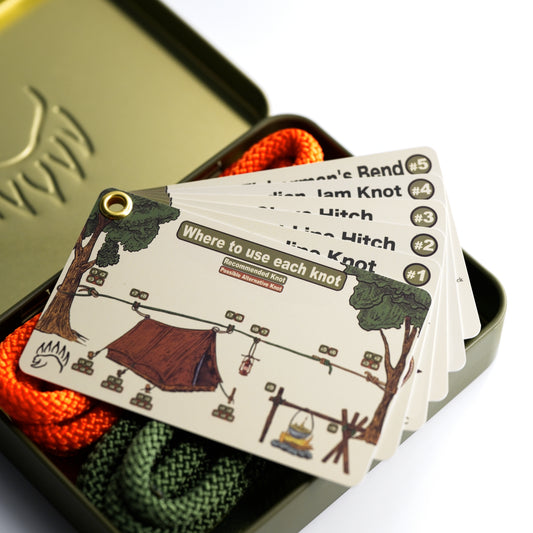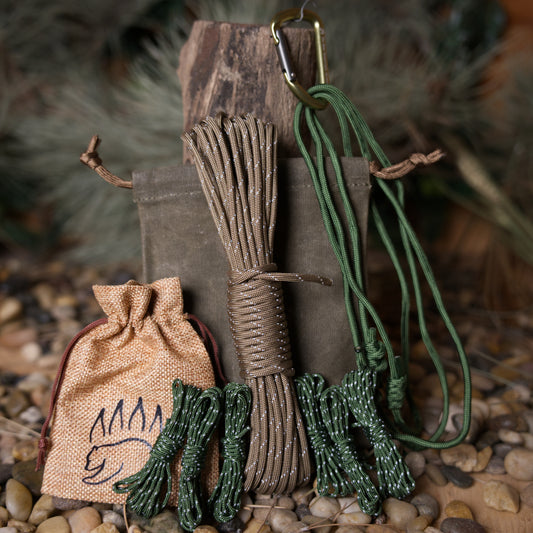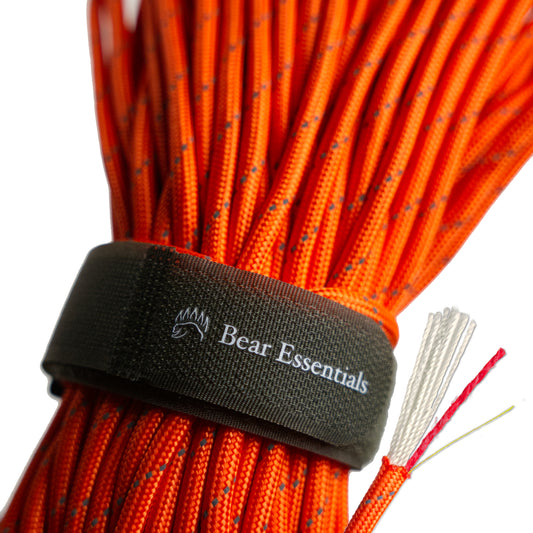How to Tie the Valdotain Tresse (VT Knot)
Usage
The Valdotain Tresse (VT Knot) is commonly used as a friction hitch in climbing and arborist tasks to ascend or descend ropes securely. Compared to other friction hitches like the Prusik Hitch or Blake’s Hitch, it offers smoother adjustability and reliable grip, but it requires precise tying to prevent slippage. Its asymmetrical design allows controlled movement, making it a favorite for tree climbing or high-angle work.
Why Learn the Valdotain Tresse (VT Knot)?
Its adjustable friction design ensures secure rope control in demanding scenarios. This knot is a top choice for climbers and arborists needing reliable ascending or descending.
Common Uses
-
Climbing:
- Secures climbers for ascending or descending ropes.
- Provides backup grip for belaying or rappelling.
-
Arborist:
- Facilitates tree climbing for pruning or maintenance.
- Secures lines for controlled descent in canopy work.
ABOK Number
(Ashley Book of Knots)
Other Names
Category
|
Notable Features
- Strong grip: Holds firmly on ropes under load, ideal for climbing.
- Smooth adjustment: Slides easily when released, great for precise positioning.
- Versatile use: Works in arborist tasks, climbing, or rescue operations.
- Controlled descent: Allows safe, gradual movement on loaded ropes.
Variations
No true variations are listed in the JSON for the Valdotain Tresse. For added security, increase the number of downward wraps to 6 for slick ropes or add a backup knot below the hitch to prevent slippage.
Similar Knots
Prusik Hitch vs. Valdotain Tresse
- Pros: Simpler to tie and stronger grip for heavy loads.
- Cons: Less adjustable, harder to slide than the Valdotain Tresse.
Blake’s Hitch vs. Valdotain Tresse
- Pros: Easier to tie and reliable for arborist ascending.
- Cons: Less smooth for controlled descents compared to the Valdotain Tresse.
History
The Valdotain Tresse originated in European climbing and arborist communities, developed for its adjustable friction in rope access work. While not listed in The Ashley Book of Knots, its use in modern climbing and tree care reflects its evolution as a specialized friction hitch. Its adoption in high-angle rescue and arborist tasks highlights its reliability for controlled rope movement.
Security Level
The Valdotain Tresse provides high security as a friction hitch, gripping ropes firmly under load when tied correctly. It requires precise wrapping and tensioning to avoid slippage, particularly on slick or worn ropes. Adding extra wraps or a backup knot ensures reliability for critical climbing or arborist tasks.
Downsides
- Complex to tie: Requires practice to master the wrapping technique.
- Slick ropes: May slip on polished or wet ropes without additional wraps.
Structure
- Use a cord (6-8mm) to form a loop around the main rope, with the cord’s ends joined by a knot (e.g., Double Fisherman’s).
- Wrap the cord around the main rope 4-6 times, moving downward in tight, even coils.
- Cross the cord over itself and make 1-2 additional wraps upward, threading the cord through the lower wraps.
- Pull both ends of the cord to tighten the hitch, ensuring the wraps are snug and aligned.
- Test the hitch by applying weight; it should grip when loaded and slide when released.
Pro Tip: Use a cord with good friction properties, slightly thinner than the main rope, and practice adjusting the hitch under light load to master smooth sliding and gripping.
FAQ
Is the Valdotain Tresse strong enough for heavy climbers?
Yes, it’s reliable for most climbers when tied with 4-6 wraps, but test it under load first.
What’s the best cord for the Valdotain Tresse?
A 6-8mm cord, slightly thinner than the main rope, with good friction works best for secure grip.
How does the Valdotain Tresse compare to the Prusik Hitch?
The Valdotain Tresse is more adjustable for sliding, while the Prusik offers stronger grip but less flexibility.
Can the Valdotain Tresse be used in rescue operations?
Yes, it’s suitable for controlled descents or ascending in rescue, but requires precise tying and testing.
Why choose the Valdotain Tresse over Blake’s Hitch?
The Valdotain Tresse offers smoother adjustments for descents, while Blake’s is simpler for ascending.
Important Notes on Safety
Common failure points include uneven wraps or insufficient tension, which can cause the hitch to slip. Always verify the wraps are snug and test the knot under light load before climbing or descending. Check cord and rope for wear or slickness before tying. Ensure 4-6 wraps for a secure grip. Practice tying and adjusting in low-stakes settings first.







